Composite Bonding vs Porcelain Veneers – which is better?
The pros and cons of types of dental veneers; Myth-busting for patients
The start of the global phenomenon known as ‘Cosmetic’ Dentistry really began with the invention of the porcelain laminate veneer in the early 1980s. This was a way to change the shape size and colour of a tooth or many teeth by placing a thin layer of hand crafted porcelain, on to the tooth, by bonding it directly to tooth structure. The concept and design was somewhat like an acrylic false nail. This created an incredibly durable adhesion, especially if the bonding was done to enamel (and not the softer dentine underneath the enamel).

Porcelain Veneer (Courtesy Ivoclar Vivadent).
Initially this was designed to try to enhance a tooth without any preparation or ‘reduction’ of the tooth itself. However the thickness of the porcelain required to be durable and prevent fracturing (porcelain in thin section is very brittle) meant that this often resulted it teeth looking thicker than desired and that the gum health suffered due to the porcelain being too bulky and being a trap for plaque bacteria.
So the concepts of Smile Design and minimal tooth preparation followed, which now enabled the cosmetic dentist to be able to design a smile to the most ideal shapes, following the ancient Greek concept of the Golden Proportions.
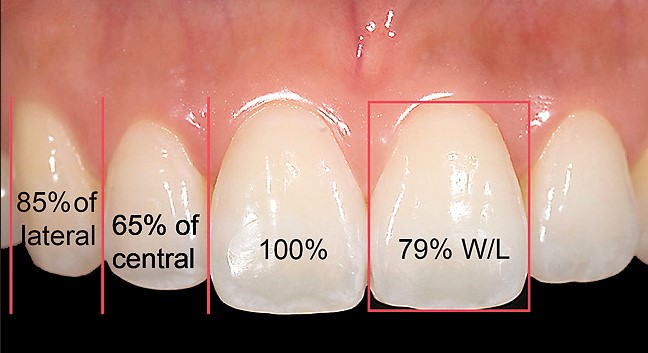
Golden Proportions applied to teeth design.
Simulation and ‘mock-up’ techniques soon followed that allowed the dentist and patient to ‘preview’ the expected result and this ensured that the design chosen matched the patients smile and face. The simulations were able to be carried out using Digital software, modifying a digital photograph of the patient’s teeth.
As the technique grew in popularity the boundaries of what the treatment could provide were pushed and the concept of “same day orthodontics” was born. This was in an era when adults rarely had orthodontic treatment to straighten their teeth (wasn’t that for kids?) and in fact little was know about how effective teeth straightening could be for adult patients. The unfortunate side effect of “straightening” crooked teeth by using veneers, was that heavy tooth reduction often needed to be required. This was an irreversible procedure that resulted in tooth structure being lost forever and in some case with heavy tooth reduction required to get the result the patient desired, this put the nerves of the teeth at risk and in some cases root canal treatments were an unfortunate side effect.
Gladly the revolution of adult orthodontics meant that many patients could have either teeth straightening and tooth whitening alone to get a great smile or, that some straightening was done beforehand to allow very minimal “contact lens” tooth preparation to be carried out.
More recently there has been a fashionable move away from porcelain veneers to ‘bonding’ which uses composite resin (white filling material) to add to or fully cover (veneer) teeth to improve smiles. Indeed composite resin can be used as an alternative to porcelain and create the same smile design results in many cases.
Porcelain veneers done badly can also make the teeth look very ‘fake’.
Bonding
Composite resins and their ‘polishability’ and ability to mimic natural shiny tooth enamel have improved greatly over the last 10 to 15 years and now these materials can in some cases look as good, and sometimes better than porcelain veneers. They often do not require much or any tooth reduction as the material is applied almost like a thick paint or putty to the teeth and thus can be kept very thin. It does not normally require a dental ceramic technician to construct the veneer and therefore saves both the patient and dentist, time and money; composite veneers are usually about 50% less in investment cost compared to porcelain veneers! Sounds great right? Why would you want porcelain if they are so great?
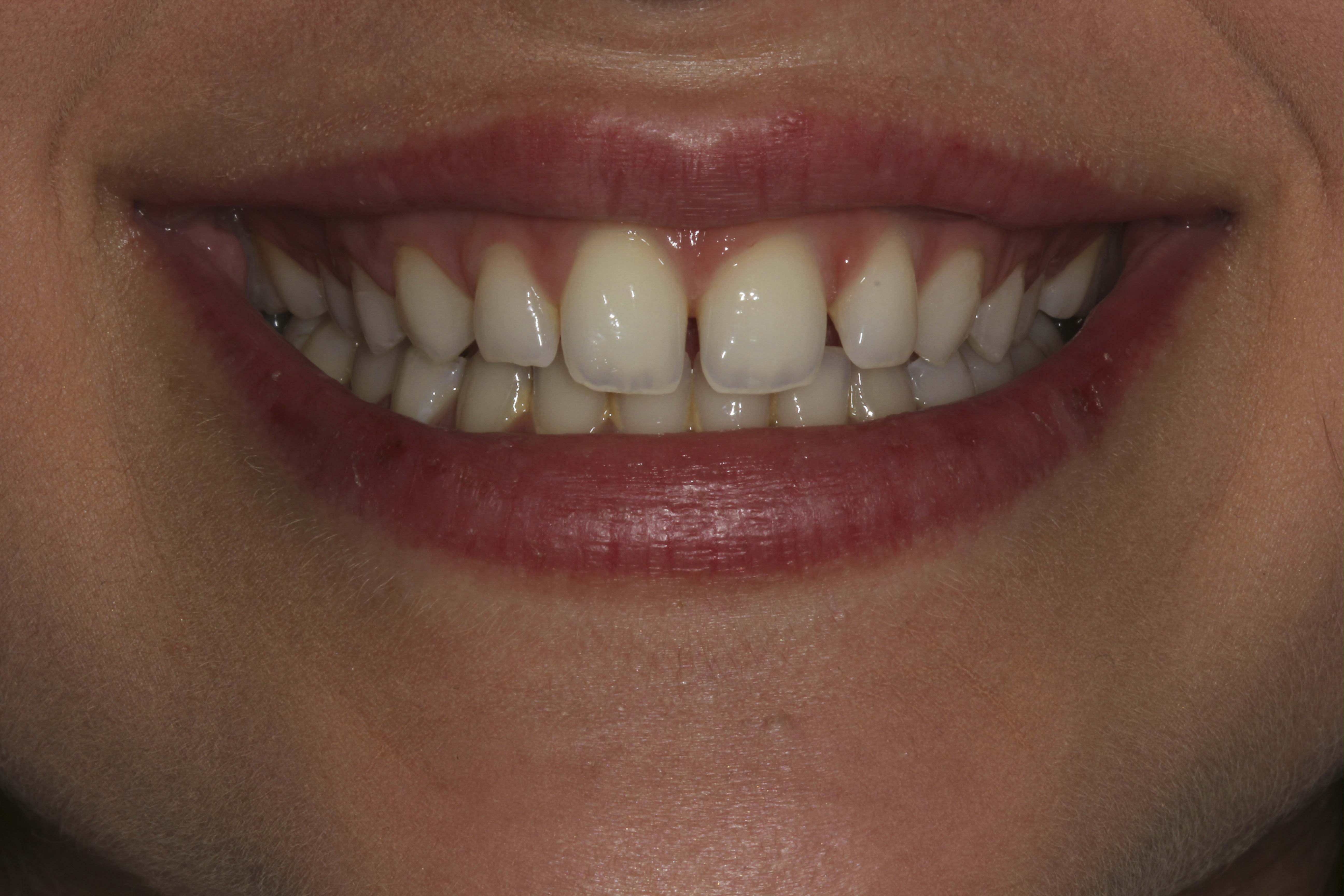
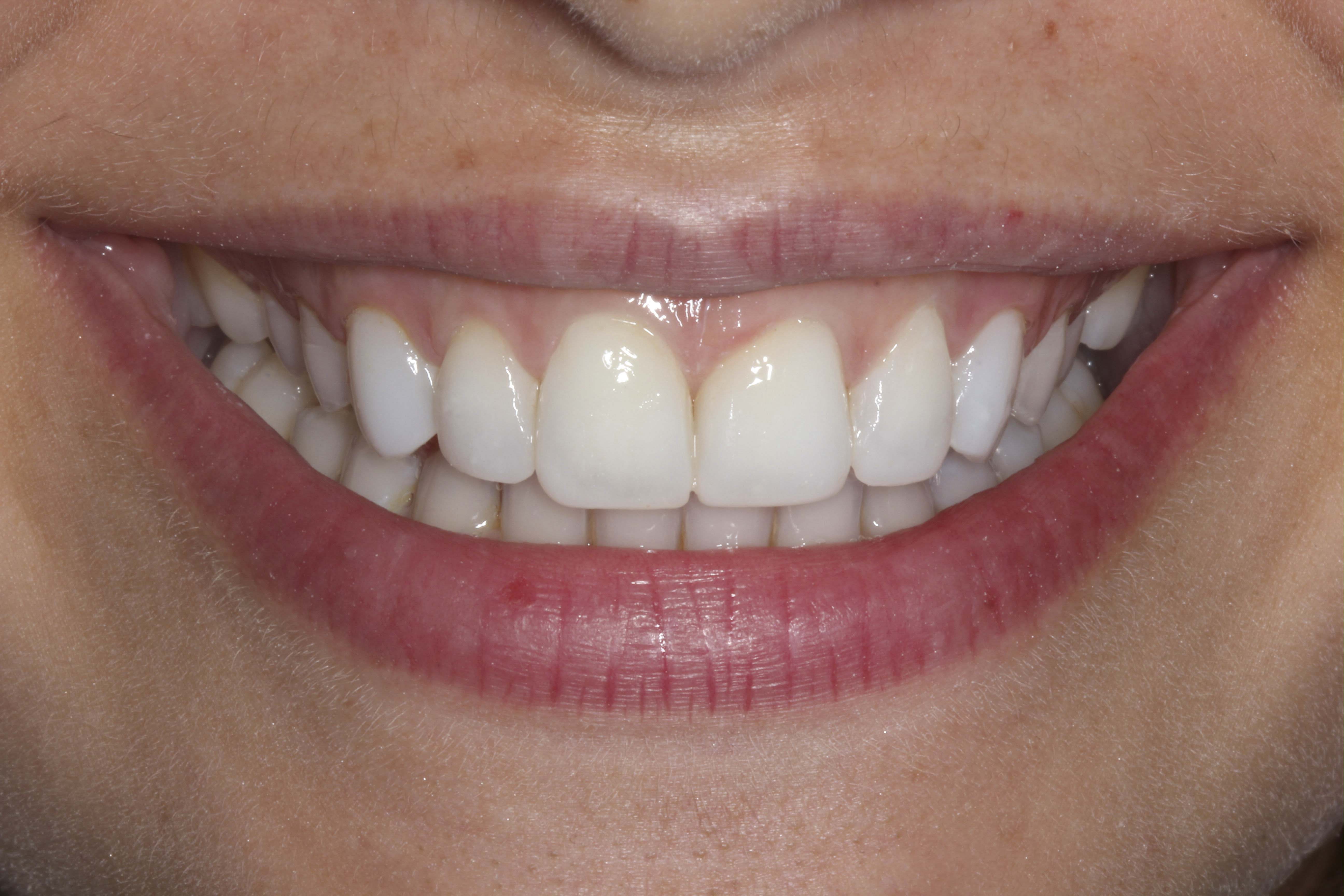
Before and after ‘no preparation’ composite bonding.
The truth is that no one treatment option or system is infallible and both have their own characteristic benefits as well as both having disadvantages, risks and potential complications. In general terms composite is cheaper and less ‘invasive’ but it will stain over time; it is also much less biologically compatible. What this means is that it will collect plaque bacteria much more readily and be responsible for far greater inflammation of the gums than most porcelains, even if placed very carefully and polished well.
Veneers
Composite resin is by its very nature porous (it has tiny holes and voids in its surface). Porcelain does not stain, is much healthier for the gums (as long as it is placed properly and correct tooth reduction is done when necessary). Well placed porcelain veneers, in a stable and gentle bite, can last 20 years before needing to be replaced. Composite veneers might need to be refurbished or indeed completely replaced after only 3-4 years.
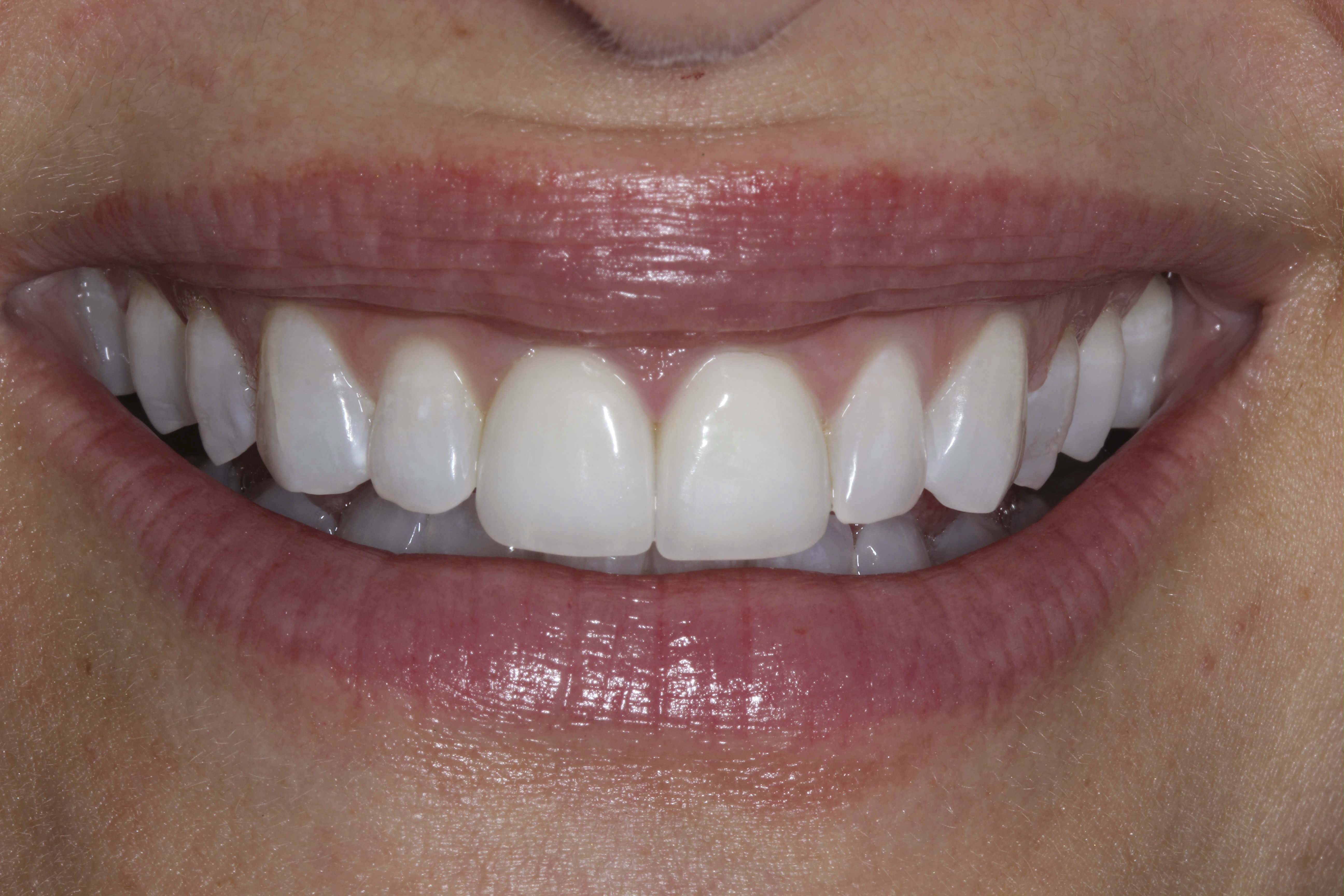
In general I personally tend to prefer composite bonding/veneers for younger patients. This is primarily due the desire to avoid tooth preparation, even if it is very minimal. This is a generalisation however as I have done many porcelain veneers in patients under 25 but usually here there is zero or only miniscule tooth preparation required (these patients usually have very small and often ‘gappy’ teeth).
If the patient already has many crowns or veneers made of porcelain than composite bonding is not rally an option and porcelain veneers are the treatment of choice.
Budget is a factor but of course the long term costs of continually having to refurbish or replace composite often outweigh the short term savings.
Choose your cosmetic or aesthetic dentist carefully. Look at their own portfolios of work at their clinics – do not always trust what Instagram shows you!
The skill of the dentist is also a huge factor when deciding on composite bonding – this is one of the most challenging treatments to do in cosmetic dentistry and only a handful of dentists have the natural abilities or have learned the skills required to produce excellent long term results with these types of veneers.
Skill and experience is of course also a factor when choosing a dentist to do your porcelain veneer smile makeover. Two key people are involved here, the cosmetic dentist and the dental ceramist. The very best and most natural and “aesthetic” results seen with porcelain veneer treatments require a very high level of skill from both these key professionals. The final ‘look’ or style of the veneers very much comes from the ceramist who in their field are considered to be both artists and craftsmen.
The key message is that not one size fits all, one option may or may not be suitable for you and it’s important to discuss all options carefully and choose a cosmetic or aesthetic dentist who has a lot of experience and skill before deciding what is right for you.
Look at their own portfolios of work (at their clinics – do not always trust what Instagram shows you!), their experience, their level of “accreditation” with cosmetic dentistry academies, their qualifications and the extra dental training they have done in these particular fields.
› DIG DEEPER ‹

Learn more about mini smile makeovers here.

Or if it’s the Enlighten Teeth Whitening System you want to dig deeper into, then give it a click right here
And to find an Enlighten whitening expert near you, hit the button below.








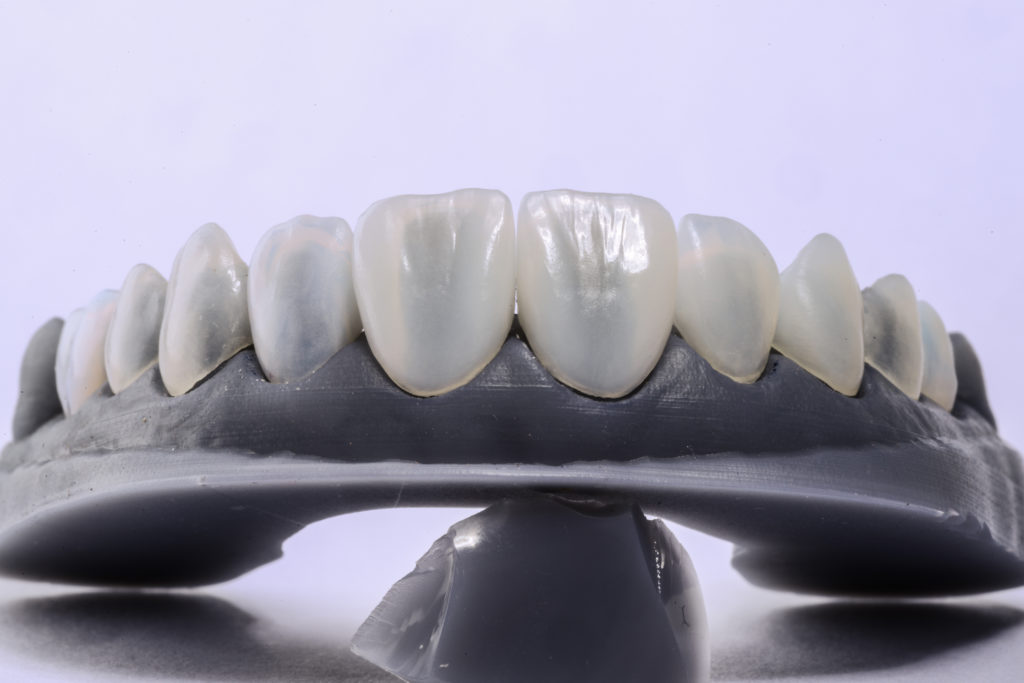

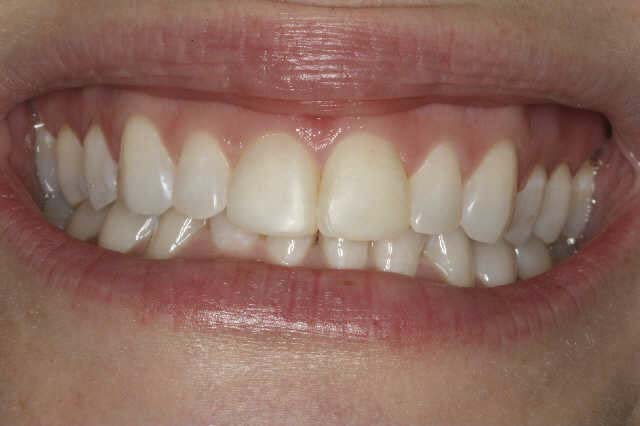
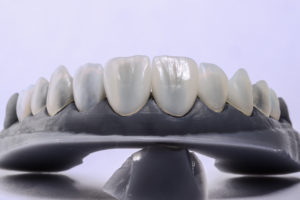



I have a fractured front tooth, which started at the bottom and going progressively higher and my dentist suggested crown. However, I rather have bonding done, less invasive, keep my nature teeth and just use bonding to fix my hairline fracture on both front tooth although only one is cracked. My questions are, if they stain, what gets done to take the stain out, if they cracks, what gets done, is stain the only problem to bonding, is there any pain associated with it, how long does it take to do. I am not choosing bonding to save cost, but to keep my teeth from being shaved as that is what gets done with veneer which may last longer. pls. help.
Hi Azzi, without seeing you it’s impossible to give the right answer because the tooth may have fractured due to a strong bite or grinding, and bonding doesn’t work well in that situation. Bonding lasts half as long as ceramic – if it stains it can be polished if it chips it can be repaired but sometimes will need to be replaced. Do make sure to return to your dentist to get his definitive plan.
Hi, the lab technician making my veneers is struggling to make them without them going see through at an area where I have tooth that can’t be shaved back further due to root exposure. He said to avoid this happening he must make them thick, but they look awful and don’t blend in with the rest of my teeth. He’s also tried using a harder less see through material but this material almost feels like metal in my mouth, the veneers are placed over my two broken front teeth, when I clear down and they touch my bottom lip it’s very uncomfortable. The veneers I recently had replaced due to staining were lovely and thin and didn’t go see through, I don’t understand why they can’t do this again. He says newer materials are thicker so this can’t be replicated, seems strange to me more modern material wouldn’t be as easy to work with. Please can you help advise us.
Hello Yvonne! It’s impossible to give you an accurate answer without knowing more about the clinical situation – it’s best and safest to visit a dentist and ask them about options.
Hi,
A small peice of my papilla gum between UL1 and UL2 (both of which are porcelain crowns) has come away leaving a very small black gap traingle. What would be the best course of action to remove the gap?
Given its in between the only two crowns I have (typical!) am I right in thinking any form of bonding is out of the question? Other than having one or both crowns replaced, is a gum graft the only other option?
I’ve spoken to my dentist but they were not very helpful and I’ve come away with “there is nothing that can be done!” feeling.
Thanks
Dear Craig, thanks for getting in touch and sorry to hear about this. Did this happen after a teeth whitening treatment? If so, the gum should recover on its own. If it happened for a different reason, then it sounds like your dentist is right – it is likely that the only thing that can be done is to replace the crowns. Unfortunately you cannot do composite bonding on anything else but natural tooth or already existing composite material. So sorry about this!
Hi what would be best if your teeth can’t be whitened due to no enamel.
Hi Kelly, If whitening isn’t an option, your smile can still be improved through veneers. Composite veneers are the least invasive type one can get and also the least expensive, but whitening will make a difference for most patients though to one degree or another. 😊
I am 55 years old and have had composite veneers since I was 22 I did it for cosmetic to make my teeth straighter and white I have since had them done at least four times maybe five my Dentist is now trying to get me to do the porcelain veneers my teeth are in good shape underneath the composite I really don’t want to shave my teeth down not at this stage of my life I just want to redo the composite. My question is this do the composites do a lot of damage to your teeth taking them off and replacing them every 5 to 7 years
Hi Michele, thanks for your question.
Even though you don’t need to drill the teeth to bond composite to them, it’s very hard to remove composite without removing a little bit of tooth structure – that said, it’s a very small amount. The big benefit with composite is that it’s repairable and minimally invasive.
Some people prefer porcelain because, if the situation is favourable with your bite , they can last for 10-15 even 20 years with much less maintenance.
You are however right that the teeth need drilling more with porcelain. If done correctly, that can also be quite minimal drilling, much less than you would need for a crown, for instance.
Find a good minimally invasive cosmetic dentist on http://www.minismilemakeover.com and talk through the options. Both are correct in the right situation. Hope that helped!
Hi I would like to know I am deciding weather I want composite bonding or veneers but struggling what’s best what would you suggest is the best one to have as a dentist.
Hello there. It is best to discuss it with your dentist, as which one would better suit you depends on your wishes as well as your teeth. There are pros and cons to both, but the general consensus is that composite bonding is less invasive so better for the teeth. Composite working is only additive, is usually cheaper but needs polishing or refining after a few years and can look very good. Ceramic or porcelain veneers means your dentist would have to shave away some of your natural tooth, it is more expensive (but lasts a long time) and they can look just like natural teeth. Hope this helped, but we do advise it is best to discuss all your options with your dentist.
Hi,
I recently (Friday just gone) had two front teeth composite bonded. The dentist however hasn’t left a gap in between my normal tooth and the composite bonded one so it’s made it impossible to floss in between those two teeth.
Is that right should I say something and go back ?
Also I had an Indian meal tonight and the two teeth went a BRIGHT yellow colour from the food, I had to brush them straight away as I panicked and it was awfully embarrassing ! Luckily the yellow staining did come away eventually. Is this right that this happened though ?
Really appreciate any advice or help that you could give me 🙂
Thanks Jenny
Hi Jenny, please go back to your dentist to check the veneers – in general you should be able to floss in between them.
Please can you tell me if bonding can be done on veneers or crowned teeth? I have some of both (as well as natural teeth. I like the tape of my teeth, but over the years they have become darker. When I had my two front teeth veneered about 1900 I asked the dentist to NOT put on WHITE veneers (as my natural teeth are fairly good but darker – and I didn’t want two Bright WHITE teeth looking odd against my normal teeth. But now I think I do need veneers. Is it possible to ut bonding over my natural teeth, and also my veneers (and one or two crowns) so that all my teeth look a tad lighter, but natural? I like the shape of my teeth but they need to look lighter – but I don’t want to land up with bright WHITE teeth looking like ‘peas in a pod’. Please advise!
Hi Jennifer! Sorry for the late reply. Composite bonding can only be done over natural teeth, but it cannot be placed over or in addition veneers, crowns, bridges or implants. These would have to be replaced if you’d like their colour or shape changed.
This really answered my problem, thank you!
Hi I’m very interested in makeover smile ASAP
Hi María,
You could find your nearest Mini Smile Makeover Centre on the link below. Please let us know if you need anything else.
https://patient.minismilemakeover.com/
Hi I’m a 40 year old woman. In the past few months I have noticed considerable discolouration of my teeth, the look grey/blue and appear to be slightly transparent. I’ve figured I have enamel erosion. I do visit my dentist often and have healthy teeth otherwise. I have not discussed the enamel erosion with her as I know there’s not much that can be done about it. I wanted to ask if teeth whitening would work on my teeth and am looking into composite bonding (cannot afford veneers at present)- any advice would be greatly welcome. I’m finding it really difficult to show my smile due to this. Many thanks in advance 🙂
Hi Samina,
Happy New Year!
Your case does sound like it could benefit from teeth whitening but without a thorough examination, it’s almost impossible to tell you for sure. You’ll need to be assessed by a dentist to see if your teeth can be suited to either teeth whitening or composite bonding.
I’d advise you to speak to your dentist or speak to an Enlighten whitening expert dentist by clicking here
Hope that helps 🙂
Dr Sanjay Patel
Co-founder of Enlighten Smiles.
I’m due to get composite bonding on my very small Very gappy teeth. I had a trial and they felt huge!!!! Does it take long to get used to it ? I feel like it will really change my speech as I found it difficult to talk properly when I had the trial in? Is this all normal? Thanks
Hi Christine,
Yes, it will always feel very strange at first. Especially in your case where the teeth have been made bigger to close the spaces. You have to remember all your life you have been used to small teeth with gaps and changing them overnight is a big adjustment.
Give it some time and then speak to your dentist if you still have any concerns. There may be some minor changes that can be made to make them feel better.
Thanks for getting in touch,
Dr Sanjay Patel.
Co-founder of Enlighten Smiles.
My grandson is 22 and has perfect teeth but wants them whiter. He wants to have them veneered but I feel this is unnecessary at his age. Am I right to think his teeth could be ruined for the future and he should wait till he is a lot older to have this done. Help . Thank you Mrs R Bancroft.
Hi Rosemary,
Firstly, apologies for the delay in response.
If your grandson has perfect teeth why does he want them veneered? Having any cosmetic dentistry should be thought about very carefully and we always advise to be minimally invasive – avoid cutting down any tooth structure unless it is appropriately justified. Teeth whitening is a great way to whiten teeth without harming the tooth structure and could be an excellent option for your grandson rather than veneering them as he is still young. The best thing he can do is speak to his dentist for a better understanding of the options.
Thank you for getting in touch,
Dr Sanjay Patel
Co-founder of Enlighten Smiles.
Dear Sir was some time ago ,since then
I am suffering from lower tooth enamel loss due to age ,I once had a veneer in the surgery painted and polished synthetic transparent , slightly tinted is ok ,took no more than 10 minutes to finish ,very happy .
Since then at the age of 72 can not afford to have treatment of this kind as it seems to cost a fortune ….Limited income . Why am I not allowed to have treatment on NHS to make me feel normal ..
If you should need such a client for filming my dilemma I would be more than willing to participate as a teaching .
I am young at heart and am told I appear sometimes 40 ,which of course I do not believe and am flattered but loosing ones youth is an awful thing when other problems in the body are also letting one down .
I thank you for your consideration in this matter .
I must be bonckers to have written this but who cares at my time of life
Sincerely
Mrs Jennifer Wilson
Dear Jennifer,
We apologise for the late reply. So sorry to hear about your tooth loss, we do understand it must be unpleasant to notice it.
Unfortunately, this type of treatment is unavailable under the NHS because is considered a cosmetic treatment.
As it is a private type of treatment, most dental practice have finance options so you can spread the cost over multiple months if needed.
We will definitely keep you in mind and let you know if any opportunity will become available. Unfortunately we don’t teach on live cases.
We are sorry we can’t help anymore in this matter, however if you wish any further information, please let us know.
All the best Mrs. Wilson,
The Enlighten Team